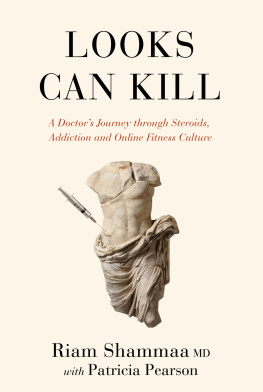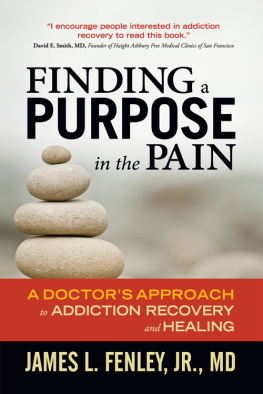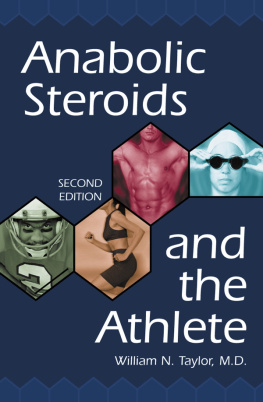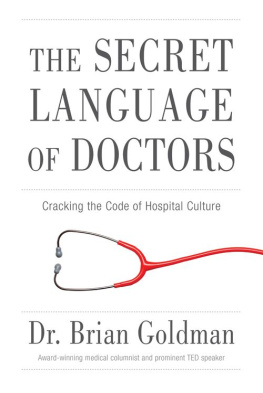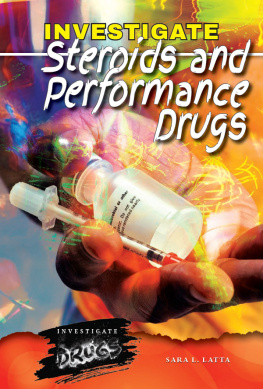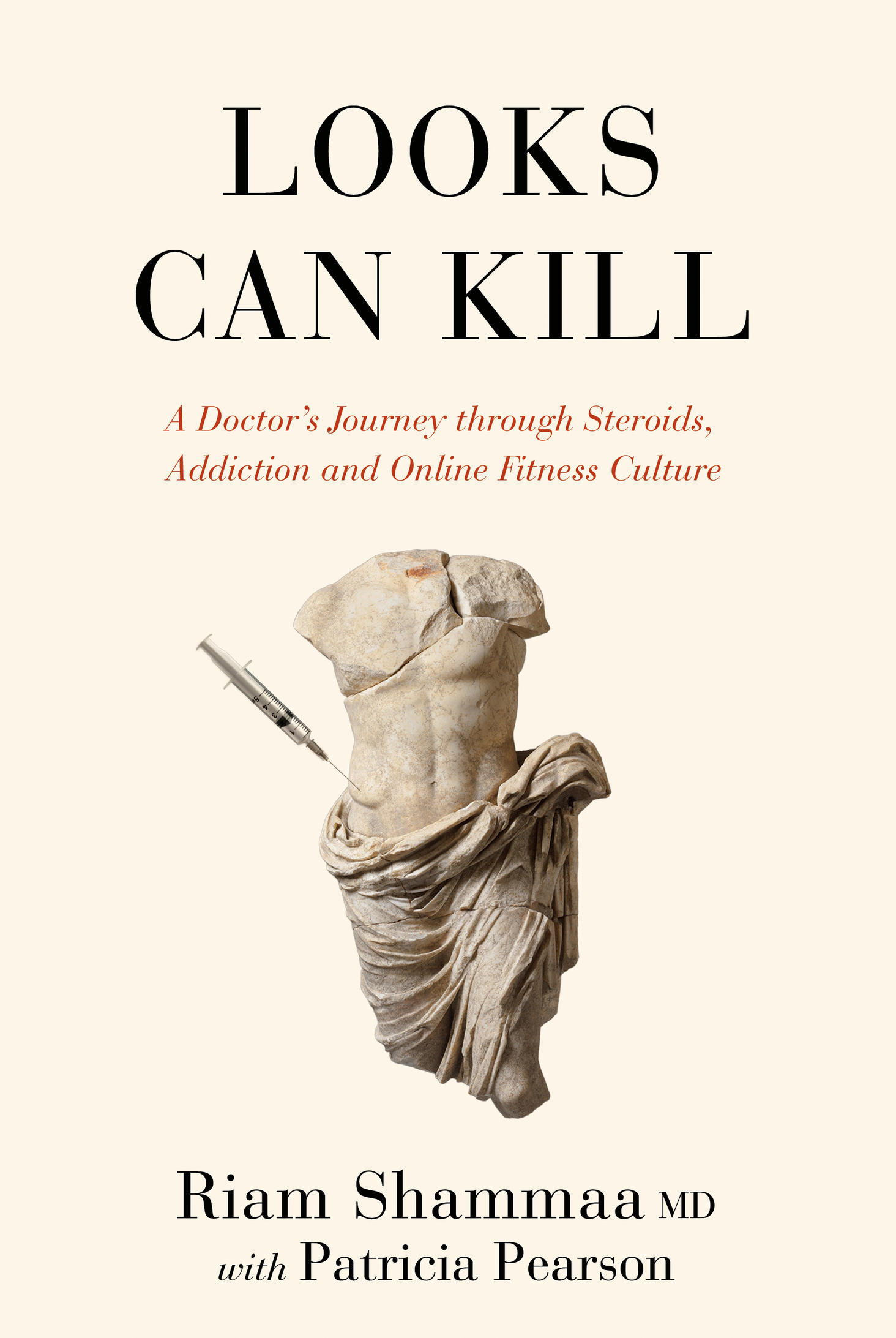WE WOULD LIKE TO THANK , first and foremost, the people who stepped forward to share their stories of AED use with us. Without their candour and hard-won wisdom, this book would not have been possible.
Thank you to Mary Mackenzie and Catherine Annau, who took an interest in this subject and facilitated interviews for us from their respective corners of the health and fitness world.
We are grateful to Dr. Leora Pinhas, Dr. Roberto Olivardia, Dr. Blake Woodside, Dr. Jonathan Hayes, and Ajay Ramnarine for spending time with us in order to lend their expertise.
Journalists Mark McClusky and David Epstein laid a lot of groundwork for discussing the capacities of the human physique in their respective books, Faster, Higher, Stronger and The Sports Gene.
A shout out to Sarah Lazin, for dotting the Is and crossing the Ts on the book contract.
And huge thanks to our Random House Canada team: publisher Anne Collins, senior editor Craig Pyette, copyeditor John Sweet, and book designer Leah Springate. Your grace, intelligence, and professionalism elevated the book.
APPENDIX
I am including a few brief extracts from the 2013 Swedish clinical guidelines for the benefit of my fellow healthcare providers, some of whom might be learning in this book for the first time about the likelihood of AED use by their patients. I have selected excerpts most pertinent to initial recognition of symptoms of AED abuse. To my knowledge, these are the only guidelines published anywhere for physicians and other healthcare workers. To see the full list of guidelines, please search the title below online, in case the URL (http://dopingjouren.se/Dopingjouren_EN_sept2013.pdf) changes in the future. The guidelines are published by the Anti-Doping Hotline, Karolinska University Hospital, and I am grateful to the publishers for their permission to include these excerpts.
SWEDISH CLINICAL GUIDELINES ON THE ABUSE OF ANABOLIC-ANDROGENIC STEROIDS (AAS) AND OTHER HORMONAL DRUGS
When to Suspect AAS Abuse
AAS abuse is quantitatively the greatest problem in doping. The typical patient is a male, between the ages of 17 and 30 years, engaged in weight-training, and using one or more AAS substances, who might, at some point, have tried growth hormone.
Table 2 shows a list of signs that should evoke suspicion of AAS abuse, as well as adverse effects that may require further investigation. Women abusing AAS experience the same adverse effects as men. Masculinization of features in women are common, and many of these adverse effects may be irreversible.
TABLE 2 Physical Signs and Adverse Effects of AAS Abuse
Rapid and significant weight gain (approximately 10 kg in 2-3 months)
Muscular physique
Disproportionate muscle growth, mainly around the chest, neck and shoulders
Edema
Severe acne, mainly on back, shoulders and chest
Striae (stretch marks) usually between the biceps and pectoral muscles, but may also occur on the back and thighs
Excess body hair
Gynecomastia (mammary enlargement)
Altered sex drive, initially increased, then decreased, may cease after stopping cycle of abuse
Potency problems
Androgenic alopecia
Cardiac problems (high blood pressure, lipid pattern abnormalities, palpitations, myocardial infarction)
Liver abnormalities
Local reactions at the injection site (swelling, redness, tenderness)
Tendon and muscle tears
Testicular atrophy (shrinking of the testicles)
Fertility problems
Female-Specific Signs of AAS Abuse
TABLE 3 Common Adverse Psychiatric Effects of AAS Abuse
Aggression
Depressive symptoms (dysphoria, depression, suicidal thoughts, attempted suicide)
Reduced impulse control
Anxiety
Panic disorder
Affect instability
Concern
Psychosis
Sleep disorders
Megarexia
Empathy disorder
Reduced mentalizing capacity
Jealousy
Violence
DIAGNOSIS
It is the authors experience that patients are rarely questioned about doping, and that suspicion of an AAS abuse is seldom taken into account in the differential diagnosis. Since the effects and adverse effects are so multi-faceted, maintaining an index of suspicion to consider the diagnosis is needed.
In patients presenting with symptoms and clinical characteristics, history taking should include questions about AAS. The clinical suspicion must be verified by urine analysis for AAS substances.
Table 4 shows an example of recommended components of a medical history.
TABL E 4 Medical History for Suspected or Verified AAS Abuse
Social history | Medical/Psychiatric history |
Educational level | Current complaints |
Profession | Psychiatric history, including sleep |
Occupation | Gynecological history for women |
Spare-time activities | Previous diseases |
Training experience/level | Current diseases |
Networks | Current medications |
Alcohol/drug use | Current dietary supplement use |
Other types of abuse | Allergies/hypersensitivity |
Criminality |
Characterization of AAS Abuse
In cases where it becomes evident that the patient has been abusing AAS, he or she should be questioned about what substances have been used, and to what extent.
Questions to Ask:
Age for AAS abuse debut
Duration of AAS abuse and duration of cycles
Which substances have been abused, and in what combination
Which pharmaceutical forms
Cumulative dosage for each substance
Physical Examination
The physical examination includes performing a general examination of the patient, together with an extended/targeted status, regarding specific organ systems which may be affected by an AAS abuse, as well as possible observed adverse effects.
Table 5 gives an example of components of a physical examination.
TABLE 5 Physical Examination
General appearance (height, weight, and body mass index [BMI])
Heart (blood pressure, pulse, signs of heart failure, cardiac murmurs)
Lungs
Abdomen/rectal examination (hepatic enlargement, prostatic hypertrophy)
Urogenital (testicular atrophy)
Neurological examination
Chest (gynecomastia)
Skin/hair (acne, premature baldness, striae/stretch marks, especially axillary)
Musculoskeletal (muscular)
Specific to women: clitoral enlargement, deepening of voice, menstrual abnormalities, body hair
Measures Taken at Initial Patient Contact


